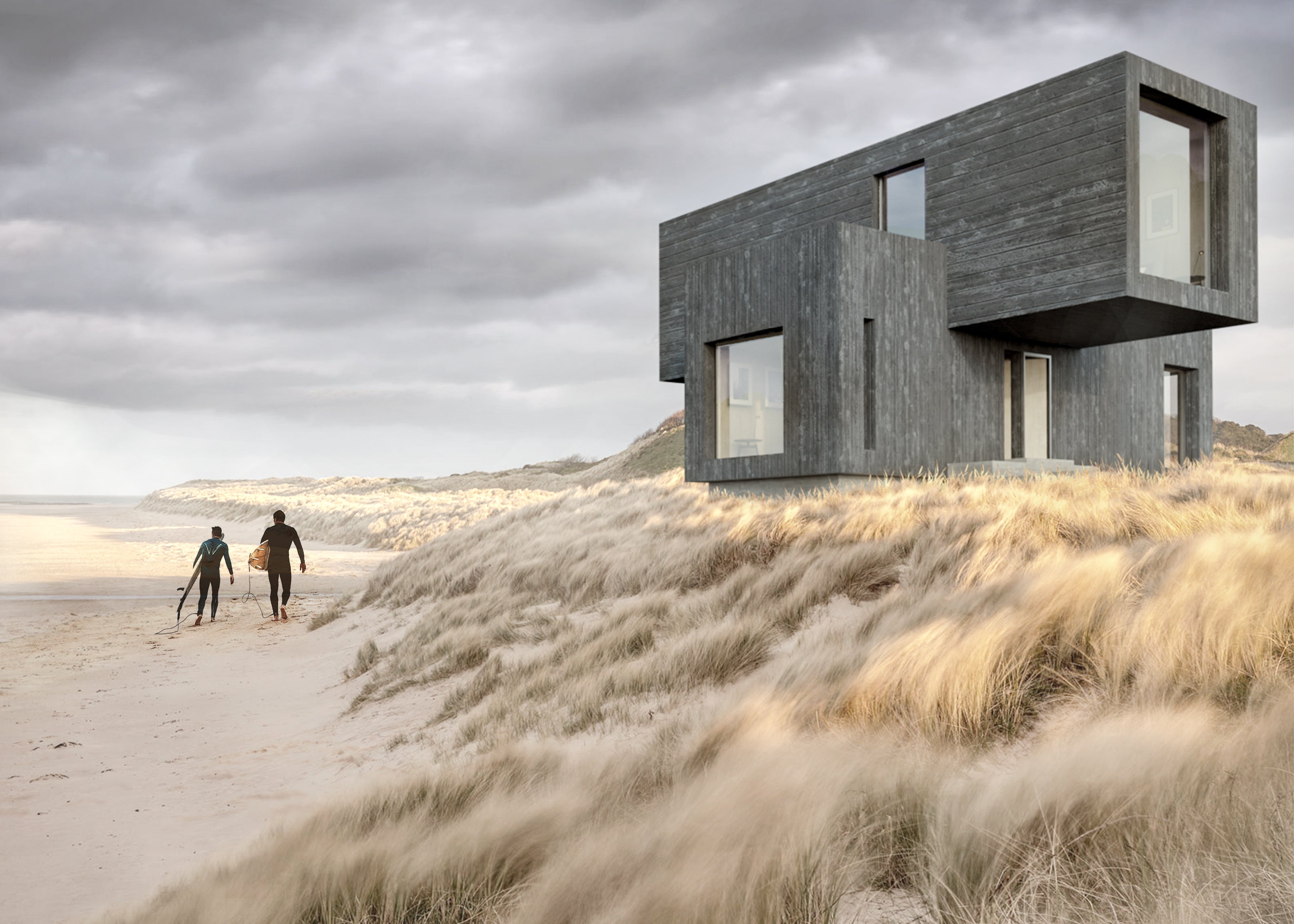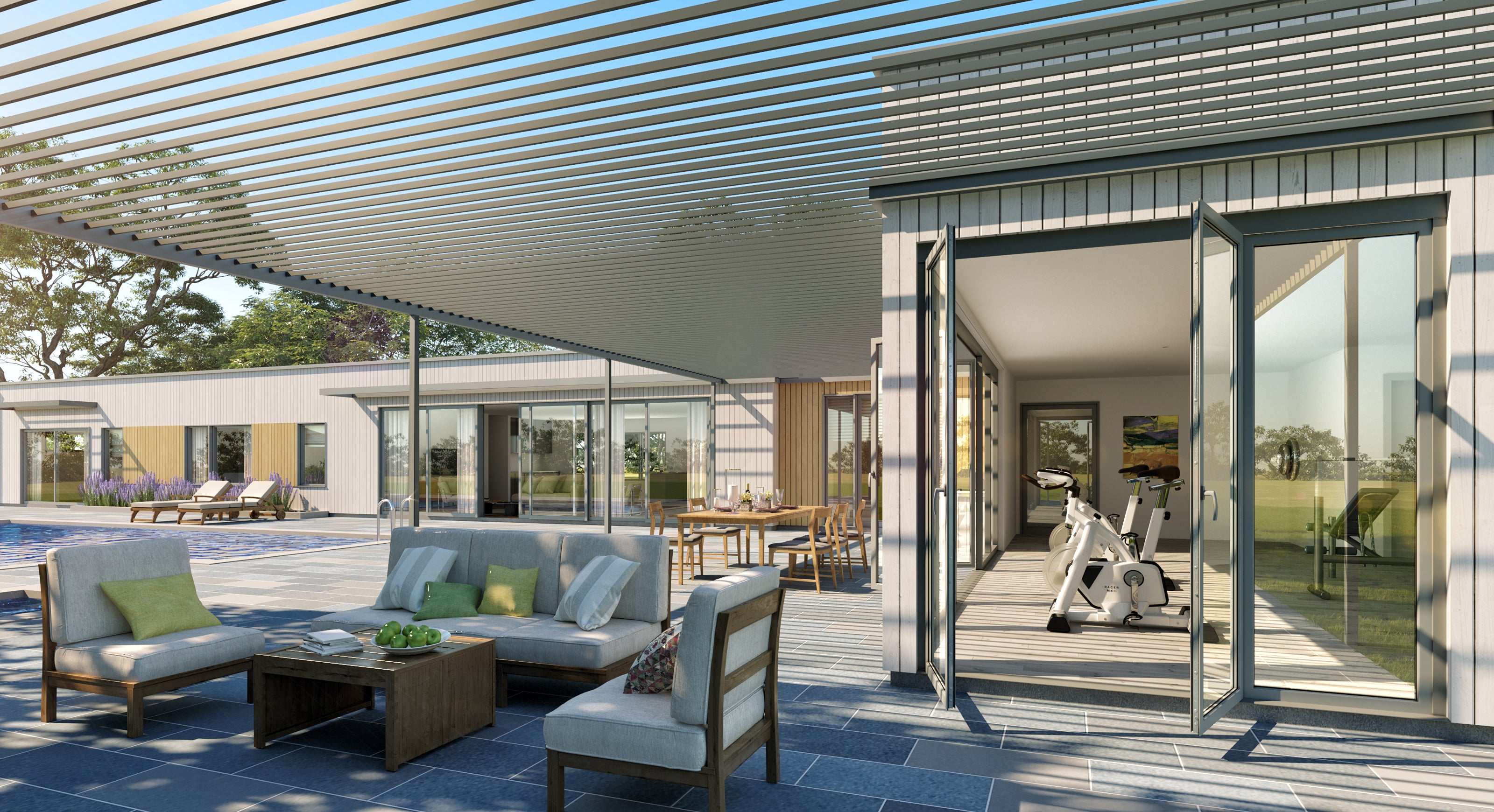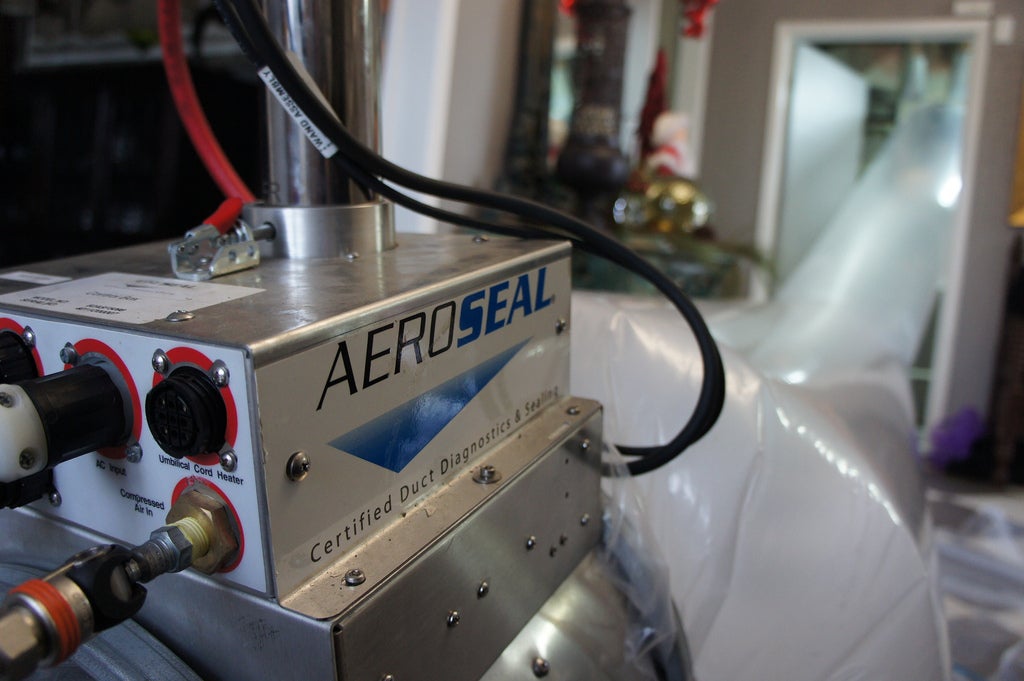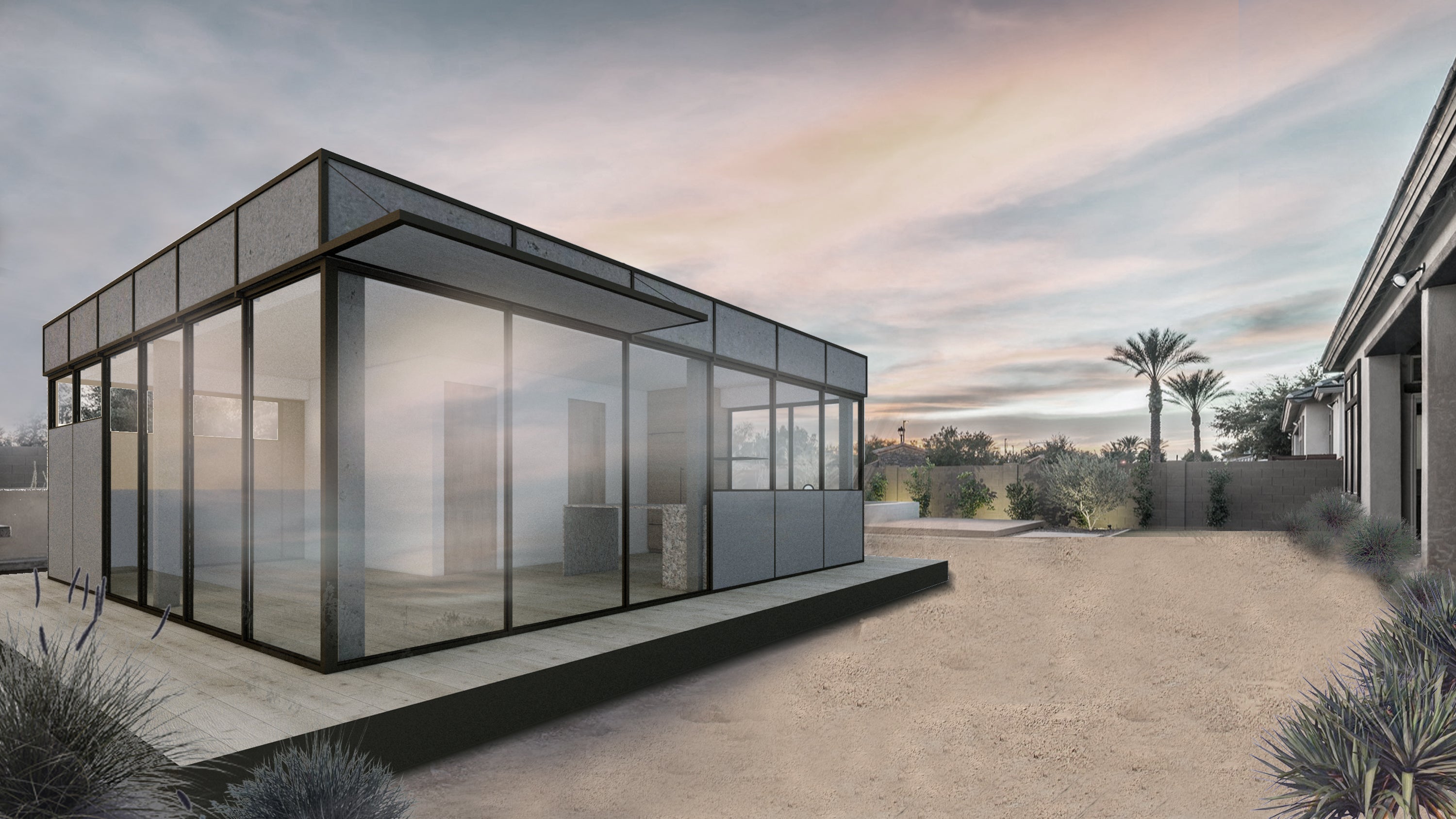Tips for Designing an Eco-Friendly Home

Read more about the benefits and tips for designing an eco-friendly home, ranging from reducing your carbon footprint to cost savings.


Read more about the benefits and tips for designing an eco-friendly home, ranging from reducing your carbon footprint to cost savings.
As the world reaches a basic understanding of the environmental costs of daily living, many people are making more sustainable choices in an attempt to reduce their carbon footprint. While travel mugs are still a great way to reduce your individual impact, new and innovative approaches such as sustainable home design are growing in popularity.
We’ve spoken to two businesses that specialize in eco-friendly home design to bring you these tips for making more sustainable choices in your home. Whether you’re building from the ground up or renovating, Plant Prefab and Aeroseal provide energy-efficient and eco-friendly ways to improve your most precious investment — and our planet.
It may not always be obvious, but there are many reasons to design an eco-friendly house. When it comes down to it, sustainable homes have two key benefits: environmental preservation and energy efficiency.
Eco-friendly home design for sustainability
As climate change accelerates, so does the demand for sustainability as a conventional element of home design. What does this mean? It means that homes are designed with a minimized disturbance of the environment. Sustainable building materials, ethical construction processes, and water conservation are all considered in order to reduce a home builder’s carbon footprint.
By becoming more mainstream, it’s also a financially viable option for more people, at least according to the air sealing technology professionals at Aeroseal.
“The demand for eco-friendly homes increases every year, evolving from being an option for more expensive, custom homes to becoming a standard part of mainstream home design,” they say. “Now more than ever, homeowners realize the need for greater comfort and cleaner air indoors. And these benefits can be realized easily and affordably with an eco-friendly home.”
The eco-house experts at Plant Prefab also see the push for sustainability increasing.
“There seems to be an increasing awareness about the dangers of climate change and the huge impact the built environment has in exacerbating the problems with respect to carbon emissions,” they say.
“As a result, we’re seeing more demand for sustainable and healthy construction in our homes. Many cities and states are mandating that homes and buildings be constructed to be more energy and water efficient.”
Eco-friendly home design for energy efficiency
The second perk, and perhaps the one you’ll notice the most, is energy efficiency — and more specifically, lower utility bills. By cutting down or, in some cases, eliminating your reliance on the grid, you’ll see energy bill savings.
As explained by the folks at Aeroseal, electricity, gas, and water bill savings are seen through three main areas of action: “Tapping into a renewable energy source like solar to power the home, making sure the home is constructed to be air-tight and well insulated, and using more efficient mechanical systems in the home to use less energy.”
Through energy efficiency, the financial benefits can also be twofold. By putting less strain on your cooling and heating systems, they’re more likely to last longer, meaning you’ll be spending less frequently on costly maintenance and replacements.

Here are six ways you can incorporate sustainable design principles into your home.
Work with — not against — your surroundings
If you plan on building your home from the ground up, it pays to consider the landscape of the site you’ll be building on. By working with your surroundings, you can minimize the disturbance to the landscape and reduce construction costs in the short term, and temperature control costs in the long term.
It goes without saying that we’d all choose a perfectly even plot of land if we could, but many people choose more difficult sites to stay within budget. A sloping site, for example, is often leveled before a house goes up, even though it isn’t always necessary. In some cases, uneven land can lend itself to a home with great under-house ventilation, reducing the need for expensive heaters come wintertime.
Also, keep this rule in mind when it comes to landscaping. Native plants will not only look great, but they often require less energy-intensive maintenance like watering and mowing.
Make your home airtight, starting with insulation

Given that heating and cooling makeup almost half of your home’s energy consumption, it’s essential that you’re making every effort to minimize warm or cool air loss, depending on the time of year.
Proper insulation is one of the most energy-efficient tools in the kit, as it’ll help prevent you from running your thermostat too high or low to compensate for air leaks. Recycled insulation, such as cellulose and glass mineral wool, which uses a minimum of 50% recycled glass, is a common option for making insulation even more eco-friendly. Plant Prefab also recommends selecting products that are GREENGUARD Gold certified, meaning they have met rigorous third-party chemical emissions standards, to avoid the off-gassing that comes from formaldehyde, a material used in traditional fiberglass products.
To make the insulation even more effective, consider duct and air sealing technology, such as that from Aeroseal. According to the experts at Aeroseal, even new homes encounter leak issues.
“Whether a home is new or old, its ductwork and building envelope contain many small leaks. Small leaks are a big problem, wasting as much as 30% of a home's energy,” they say.
“Duct sealing and air sealing technology from Aeroseal seals these leaks – guaranteed. And homeowners will feel the difference with more even temperatures throughout the home, cleaner healthier air, and lower utility bills.”
Thinking about coverage?
Security for your home. Protection for your budget.
Consider solar panels for your roof
Solar panels work by turning the sun's energy into electricity for your household, through photovoltaic technologies. While they’re sometimes a significant upfront spend, some reports suggest you’ll see a return on your investment in fewer than ten years, or even less if you opt for a bigger system.
As explained by Plant Prefab, solar power systems are growing in popularity and all new homes in California must be solar-ready. Solar power can significantly reduce your electricity bills, or eliminate them altogether if the system is sized to produce all the electricity needed to power your home.
“Consumers want their homes to be more energy-efficient and, increasingly, are selecting photovoltaics as a way to generate the power they need,” they say. “Solar panels generate power from the sun and act to lower or mostly eliminate your energy bills.”
The one downside is this renewable energy resource isn’t available to all households as its efficiency relies on factors such as exposure to the sun and roof position. New home builders would benefit from considering these factors early on in the process in order to get the most bang for their buck.
Get smart with smart technologies

While smart appliances have long received kudos for their easy route to energy efficiency, smart homes are still relatively new territory. By integrating self-managed eco-technologies into your home’s design, you’ll be one step closer to carbon neutrality in your home.
The most universal adoption of smart technologies is smart thermostats (also known as WiFi thermostats). With a smart thermostat, you’ll be able to go further than simply programming your heating and cooling to work at certain times of the day. You’ll have remote control of your home’s temperature, meaning you’ll never have to worry about whether you’ve remembered to turn off your air conditioning.
Most smart thermostats will also allow you to track your energy usage and provide you with suggestions for reducing your usage even more.
Choose sustainable building materials
Whether you’re renovating or building your home, there comes a point where you’ll have to make decisions about the materials you’ll need for your flooring, walls, and even structural features such as your roof.
Nowadays, you’ll find a wide array of environmentally friendly options, such as sustainably certified timber, reclaimed wood, recycled insulation, and eco-wood finishes. The good news is that contrary to popular belief, these options don’t necessarily have to be more expensive than their non-eco counterparts. For example, recyclable linoleum flooring is much cheaper than wood and has come a long way in terms of appearance since the 80s.
The eco specialists at Aeroseal reinforce the way building materials, rather than simply appliances, can be essential to the construction of an eco-friendly home.
“While a home's finishes, appliances, and lighting are key to saving energy and not contributing to carbon emissions, building materials and construction processes are also critical to creating an environmentally friendly home,” they say.
Install water-saving systems
Eco-friendly households recognize water as a precious resource even when their supply isn’t at risk. Rain barrels aren’t just for areas that are drought-prone - they’re a great water-saving system that can be incorporated into your home design to help reduce your water bill and ease the strain on this precious resource.
Rainwater harvesting systems collect water that falls from your roof when it rains and storms, storing it in a tank until you’re ready to use it. While in some cases, this water is reserved for plumbing or garden maintenance, it can also be used in some domestic applications if it’s well maintained.
Another water-efficient system is low-flow plumbing fixtures. Plant Prefab says: “Low-flow plumbing fixtures, including toilets, faucets, and showers, are now required in many states. By using up to 60% less water than standard fixtures, efficient fixtures help you save money on your water bill.”
Given that up to 26.7% percent of your home’s water consumption comes from your toilet, it’ll pay to speak to a plumber about getting this installed.
Bonus: Consider the process, not just the output
According to the Environmental Protection Agency, 600 million tons of construction and demolition waste was generated in the United States in 2018, which is more than twice the amount of municipal solid waste.
These figures are particularly concerning given that a good proportion of home-building materials can be recycled (wood, steel, cotton, etc.). The environmental benefits of recycling waste are:
Stopping waste from going to landfills and releasing greenhouse gases
Easing the demand on disposal facilities and therefore energy usage
Offsetting the demand for virgin resources and materials, which are sometimes sourced unsustainably
If you’re considering a remodel or new construction project, Plant Prefab suggests working with a contractor or builder who focuses on low-waste, sustainable building. Plant Prefab utilizes precise construction drawings, cut lists, and construction techniques to ensure hyper-efficient material use and minimal spoilage from mistakes. The company also captures fall-offs for re-use, helping them build with up to 30% less waste than traditional, on-site builders. In addition to helping the planet, working with a builder who focuses on responsible building techniques can help you save valuable money on materials.
Ultimately, it all comes down to your personal design choices and budget. Your unique project budget will depend on the scope of work required, the design choices you make, as well as the cost of land, skilled labor, and building materials in your area.
With careful planning, eco-friendly houses can be extremely cost-effective – both upfront and in the long run. A smaller, more efficiently-designed home will cost much less to build and operate than a larger home. And while some sustainable and energy-efficient materials have a slightly higher price tag, they can provide significant savings over time through reduced energy costs and better durability. Higher-quality fixtures, finishes, and appliances won’t need to be replaced as frequently as their budget counterparts.
With increasing consumer interest in healthy, high-performance, eco-friendly materials, sustainable options are more widely available than ever before, and often priced competitively with less healthy, less sustainable materials.
Solar system installation prices are also trending downward in costs, thanks mostly to their popularity. As the market booms, the industry has more capital for the development of more cost-effective and efficient solar panels and inverters.
The other consideration is that paying more at the build stage will save you more down the track. Good insulation, rain barrels, and solar panels should all break even in cost in a few years when the utility bill savings are added up. After that period, your savings will be money in the bank.

Your home will likely be your largest investment, and whether you’ve called up for a quote for recycled insulation or are building a home from scratch, you’ll want to do the most to protect it.
A home warranty from American Home Shield covers many elements of eco-friendly home design, such as cooling and heating, smart technologies, ductwork, and even low-flow toilets. A home warranty can help compensate for unexpected and costly system and appliance repair costs, where necessary.
Whatever your motivation for upgrading your home, with a home warranty plan, you can be sure that your eco-friendly home stays that way for the foreseeable future.
AHS assumes no responsibility, and specifically disclaims all liability, for your use of any and all information contained herein.
Have a plan for your home when things don't go according to plan
Shop Home Warranties